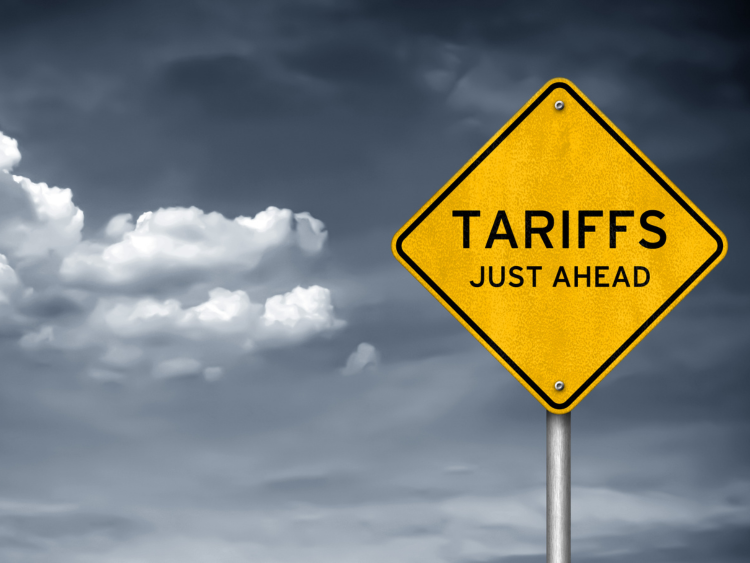Trade Cases

Leibowitz: Exclusions from Section 232 Tariffs—Is the Government Relenting?
Written by Lewis Leibowitz
November 15, 2020
Trade attorney and Steel Market Update contributor Lewis Leibowitz offers the following update on events in Washington:
The steel tariffs were in the news recently with the announcement of a settlement of a lawsuit brought to challenge denials of exclusion requests. This is the third case, by my unofficial count, that has been settled in this way. The plaintiffs were JSW Steel (USA), NLMK and Borusan Mannesmann, all U.S. companies that rely heavily on imported inputs for further manufacture. Readers have asked me if there is a new pattern emerging. Here’s my best guess—and the recent election is, of course, relevant.
The product exclusion process was initiated by presidential proclamation on March 8, 2018, when the steel tariffs were first put into place. Regulations were published by Commerce on March 19, 2018. Exclusion requests started pouring in almost immediately. According to the Mercatus Center at George Mason University, about 170,000 steel exclusion requests have been submitted since March 2018. About 95,000 have been approved, 26,000 have been denied and 48,000 are still pending.
Two product groupings have generated much controversy in the exclusions space—semifinished steel and pipes in the energy sector. In fact, exclusion requests for steel slabs have been almost uniformly denied for more than two years. Most pipe requests have also been denied.
In July 2019, faced with uniform denials of their exclusion requests, JSW Steel (USA) filed suit challenging the rejections. Several other lawsuits followed. Borusan filed its suit in January 2020 and NLMK followed in February. Many others are still in court waiting to be decided.
Of the three settled cases, a common feature was the Commerce Department’s record-keeping problems. That is, some documents that formed part of the record of decision were not furnished to the court, the decisions on the exclusion requests did not adequately explain the reasoning behind the denials, and other procedural requirements were not complied with. These cases presented but a small sample of 170,000 exclusion requests, so we can’t conclude that all Commerce record-keeping was deficient, but there is reason to believe that record-keeping problems may have been frequent.
For example, in the NLMK docket, instead of the typical single filing of the administrative record, the government made no less than 12 separate filings of the record between May and September 2020. This is a clear sign that Commerce’s record-keeping left much to be desired.
In the two other settled cases, similar record-keeping problems cropped up, necessitating repeated supplemental filings. While the inadequacies of record-keeping may not have been the whole reason the government settled these cases, it was clearly relevant.
The settlements also enabled the parties to keep the terms of settlement confidential. In Borusan and JSW Steel, the specific terms of the settlements were not revealed at all. Some Customs entries were settled without the payment of any Section 232 tariffs, and others had to pay those tariffs, but which entries and how much money were not disclosed.
In NLMK, the settlement notice specified the entries covered by the settlement and the tariffs paid. Based on this public filing, the total refund of duties to NLMK under the settlement was considerable: about $97 million.
Whatever the motivation for the settlements, the government certainly faces additional suits.
U.S. manufacturers claim with increasing frequency that the steel tariffs and quotas hurt the country’s manufacturing base more than they help. The controversy over tariffs and exclusions will continue, especially now that Brazilian slab quotas have been cut for the fourth quarter and rolling mills, especially in the West, are very short of slab supplies. Because of the high cost of domestic transport, rolling mills out West cannot purchase domestic slabs from mills East of the Rockies, even if those mills want to sell. They are necessarily dependent on imports. As U.S. steel-using manufacturers employ an estimated 80 workers for every steel worker, the importance of access to semifinished steel is an increasing concern.
That enormous difference between employment in steel production and consumption will not likely narrow. The steel industry might continue to claim that its 100,000 workers are more vital to the nation’s security than the 8 million workers in steel-using industries, but increasingly, businesses and policymakers will ask whether steel production is so important that the needs of downstream manufacturers should be ignored.
This brings me to the recent election’s impact. Much could be (and has been) said about the Section 232 tariffs and whether they should continue in light of the Biden election victory. Clearly, businesses have made purchases relying on the tariffs continuing. A sudden end to them would necessitate seriously damaging inventory writedowns.
However, exclusions might play a role in a changing Section 232 regime. This prospect reminds me of the end of the steel Voluntary Restraint Agreements (VRAs) in 1992. These VRAs were implemented under Reagan in the early 1980s and were slated to expire in 1989. When Bush 41 took office in January 1989, an important issue was whether they would be extended; I was involved in this effort on behalf of steel-using manufacturers. There was very heavy lobbying for and against their renewal. Big Steel wanted a five-year VRA extension until 1994; the steel users wanted them gone immediately. The Bush administration ended up splitting the baby—an extension of two and a half years until mid-1992.
The Bush team negotiated new VRAs with U.S. trading partners covering most steel imports (Canada was a notable exception). For almost every VRA country, the new steel quotas were higher than the Reagan version. With built-in quota increases, it worked out that the new quotas actually exceeded demand for many steel products. There was, in effect (as one of my law professors once wonderfully expressed), “more hole than donut” in the Bush VRAs even before they expired.
If the new Biden administration wants to relax the Section 232 tariffs and quotas, expanding the use of product exclusions could be a useful way to do it. It is possible, but nobody knows at this point if that will be done.
There could be interesting times ahead.
Lewis Leibowitz
The Law Office of Lewis E. Leibowitz
1400 16th Street, N.W.
Suite 350
Washington, D.C. 20036
Phone: (202) 776-1142
Fax: (202) 861-2924
Cell: (202) 250-1551

Lewis Leibowitz
Read more from Lewis LeibowitzLatest in Trade Cases

Industry piles on new Section 232 steel derivative inclusion requests
The Department of Commerce received 97 submissions from producers, manufacturers, and groups seeking Section 232 tariff coverage for steel and aluminum derivative products.

Price on Trade: New EU steel tariffs don’t mean the US should weaken its stance
Any steel imports into the EU that exceed the new, lower quota level would be subject to a 50% tariff, which represents a major increase from the EU’s current 25% out-of-quota tariff. This move would largely align the EU’s steel tariff rate with Canada and the United States.

Global steel forum sets 2026 framework deadline as US ups pressure on excess capacity
Global steelmakers sounded the alarm Friday over the deepening excess steelmaking capacity crisis. Ministers at the Global Forum on Steel Excess Capacity (GFSEC) in Gqeberha, South Africa, pledged to...

CRU: China’s indirect steel exports find new destination markets
The boom in China’s direct steel exports has not stopped this year, even with a rise in protectionist measures globally. The increase is driven by...

U.S. Steel sues Algoma over iron pellet shipments
U.S. Steel is suing Algoma over the Canadian flat-rolled producer's rejection of iron pellet shipments, arguing it has breached its contract.
